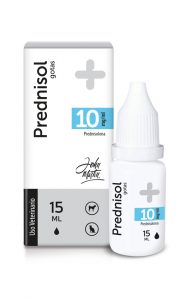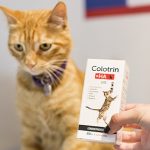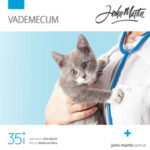The term “Eosinophilic Granuloma Complex” describes a group of skin problems in cats, which are characterized by inflammation at the site that is often exacerbated by the cat’s licking of the area. This term is not a specific diagnosis but a description of the lesions that can be seen. It can appear in three different forms. Eosinophilic Ulcer, Eosinophilic Plaque and Eosinophilic Granuloma.
Each form has its own pattern but all three are skin reactions to an underlying cause.
The skin reaction may be a minor problem that dissapears as misteriously as it appeared and may never reapperar, or it may become a persistent problem causing a great deal of tissue damage and a lot of discomfort to the cat. Cat owners express a big concern about the appearance of lesions when they are severe and about the cat’s constant licking.
Causes:
The most frequent cause of feline eosinophilic granuloma complex is an allergic response to a flea and/or mosquito bite, food intolerance or atopy. Additionally, but not very frequently, it can be the result of an infectious process, or it can have an autoinmune origin. Occasionally, it can have an idiopathic cause.
Eosinophilic ulcer
Also known as indolent ulcer, is found on the upper lip near a canine tooth and it has raised edges and a pink/yellowish surface. In spite of their appearance, the lesions are not painful or pruriginous. The lesion may start off as a small lump but can become ulcerated and can spread towards the nose. If the cat licks repeatedly, the self inflicted damage is greater than the reaction itself. There is some evidence to suggest that this is an allergic response to fleas or other allergies. It may have a genetic component. In many cases, it can be very difficult to find a cause, so it may be classed as ‘idiopathic’.
Eosinophilic Plaque
It is a lesion that can be observed in young cats (from 2 to 6 years old). They can be seen as alopecic, moist, irritated areas, they are yellow-red and, in general, they can be found in the groin region or in the abdomen, in the axillas or in inner and outer thighs.
Many of these lesions can be present and cover great areas of the body.
It is believed that this type of EGC is secondary to an underlying allergy.
Eosinophilic granuloma
Also called linear granuloma. In these lesions, collagen, part of the fibrous structure of the skin, is damaged. Lesions are red, raised, alopecic and have a granulated aspect.
Skin lesions may be single or in groups. They can be found anywhere on the body but they are commonly found as a band of raised hairless lesions along the back of the thighs in a pattern associated with grooming. It does not appear to be itchy.
Other frequent places where it can be found are: the chin and the lower lips. The nose, the muzzle and ears. The junction of the pads and the haired skin on the foot may also be affected. The foot pads may be ulcerated and swollen and there may be loss of pigment. There may also be lesions in the mouth.
How to diagnose EGC?
Most of the cases of EGC are diagnosed on the basis of the patient’s medical record and the physical appearance of the skin lesions. The identification of a great number of eosinophils in a superficial skin swab, increases the suspicion of EGC.
How to treat EGC:
In most cases, EGC responds to treatment with glucocorticoids.
Associated antibiotic therapy can control associated secondary infections.
In some cats, the problem is solved without treatment when the underlying cause disappears.
EGC occasionally appears repeatedly and it should be treated accordingly until the cause that is producing it is identified and controlled.
In cats with flea allergy or hypersensitivity to mosquito bites, it is necessary to control and prevent ectoparasites. Therapy may be complemented with esential fatty acids in food during 4-6 weeks since they have anti-inflammatory action and they really improve skin.
Technical Department
JOHN MARTIN S.R.L
BIBLIOGRAPHY:
https://icatcare.org/advice/eosinophilic-granuloma-complex/
Muller & Kirk: Dermatología En Pequeños Animales, 7ªEd (Dermatology in small animals, 7th edition).
For the treatment of EGC we have a new product.
Prednisol, flavored drops. A CAT FRIENDLY product


